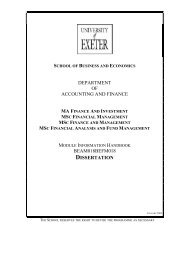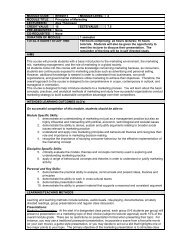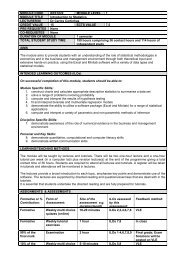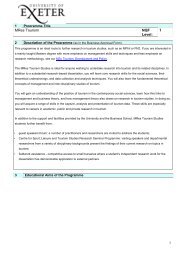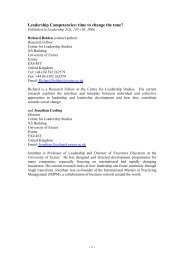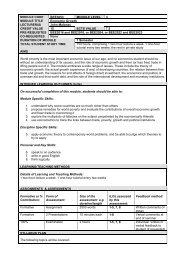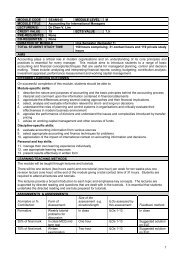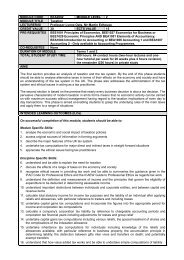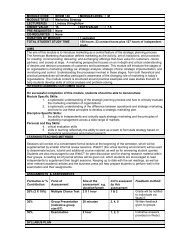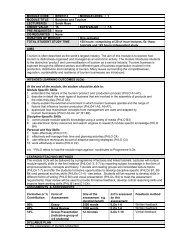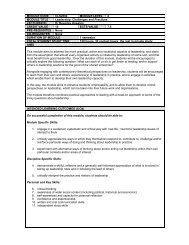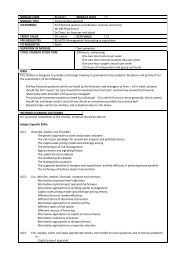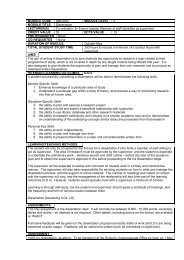Francesca Sanna-Randaccio paper - The Business School
Francesca Sanna-Randaccio paper - The Business School
Francesca Sanna-Randaccio paper - The Business School
You also want an ePaper? Increase the reach of your titles
YUMPU automatically turns print PDFs into web optimized ePapers that Google loves.
the extent of the market asymmetry, and thus unilateral environmental policy may fail to achieve<br />
its primary aim. Nevertheless, we should consider that the main driver of the decision to produce<br />
also in other major areas is represented by the fast growth of foreign markets. 47 <strong>The</strong>refore, the<br />
stricter pollution measures are likely to accelerate a decision which would be taken in any case<br />
later on. <strong>The</strong> model shows that, contrary to expectations, transport costs may induce carbon<br />
leakage, by favouring partial relocation of production.<br />
As to the welfare impact, an unilateral environmental policy not leading to a change in<br />
location strategy may rise welfare, by bringing about a fall in global emissions and rising<br />
consumers’ aggregate welfare, although local firms’ profits decrease. In order to have a positive<br />
net effect, a public opinion seriously interested in the solution of the environmental problem, and<br />
thus assigning great importance to a fall in pollution damage, is required. On the other hand, the<br />
net effect on welfare of unilateral measures is likely to be negative when the policy leads to partial<br />
or total relocation. Thus, the temporal dimension of the asymmetry in environmental policy (i.e. if<br />
it is a structural or transient scenario as other countries will follow) and the relative size of the<br />
cooperating area emerge as critical factors influencing the possibility to implement successfully<br />
more restrictive environmental measures.<br />
<strong>The</strong> attempt to moderate the risk of relocation-driven carbon leakage is indicated as a<br />
major objective of both EU and US climate policy. We found however that some of the measures<br />
considered do not create the right incentives as they are designed to deter total relocation of<br />
production but not partial relocation, which instead emerged as the most likely location strategy<br />
shift induced by unilateral climate policy. For instance the “border tax adjustments” on carbon<br />
intensive imports, proposed by the US Waxman-Markey Bill and considered also by the European<br />
Directive, may be effective when firms plan to relocate all production abroad and serve the home<br />
market from the foreign plant, but would not create any centripetal incentive if firms plan to serve<br />
each market via local production. Alternative measures should be designed, aimed on one hand to<br />
reduce the incentive to produce in both areas and on the other to limit the possible negative impact<br />
of a location strategy shift on the global level of emissions.<br />
In order to address this important issue, it is necessary to enrich the analysis by<br />
accounting for technological differences between countries, which implies that emission<br />
26



